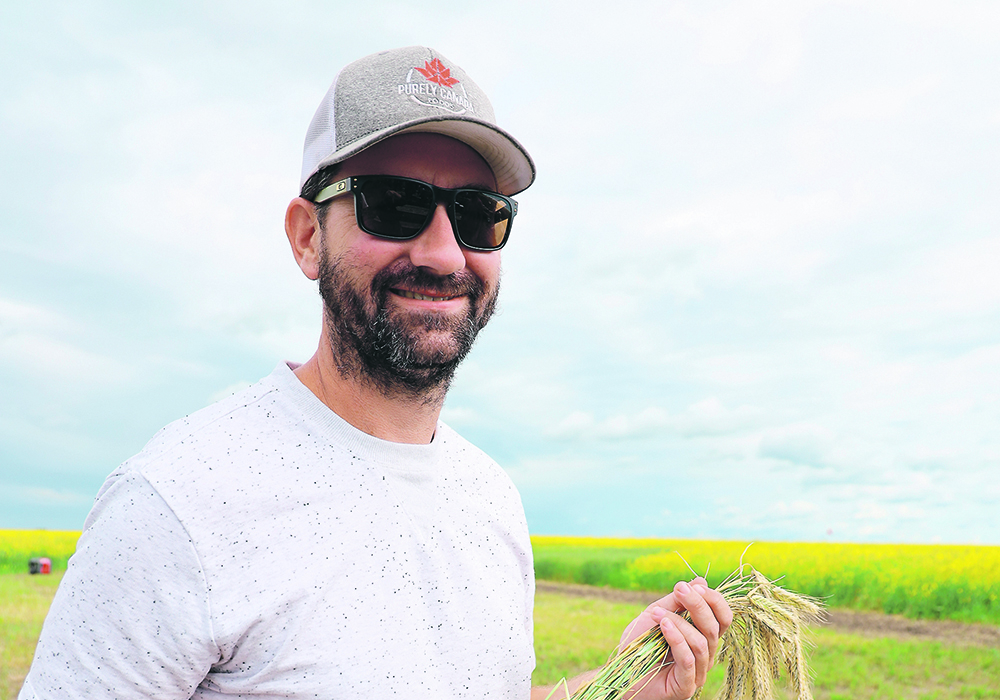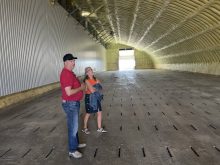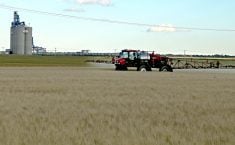Farmer selected the crop when looking for ways to expand his wheat-canola rotation to solve disease and insect problems
GALAHAD, Alta. — The addition of hybrid fall rye to the crop rotation has helped limit disease, control weeds and produce better canola crops, said a Rosalind, Alta., farmer.
“Consistently it performs. It is rather remarkable,” said Matthew Enright, who started growing the crop when he moved back to the farm in 2015.
Enright said they knew they needed to expand their wheat-canola rotation because of the disease and insect issues the short rotation created. Hybrid fall rye seemed like a good addition.
In 2015, they seeded an early maturing barley, harvested it in late summer and seeded hybrid fall rye. In their central Alberta region, the crop insurance deadline for seeding hybrid fall rye is Sept. 15, but Enright aims to have the crop seeded by the Labour Day weekend at the beginning of September.
Read Also

New coal mine proposal met with old concerns
A smaller version of the previously rejected Grassy Mountain coal mine project in Crowsnest Pass is back on the table, and the Livingstone Landowners Group continues to voice concerns about the environmental risks.
September showers often give the crop a good start, but dry conditions in fall can create spotty germination. Last fall, germination was poor and Enright was sure he would be spraying out the crop this spring, but good snow in the winter and a late snow in the spring boosted the crop.
“There is a lot of second growth. By all accounts, it is a different year for fall rye. Fall seeded crops will do better with rain on the fall crops,” Enright told a group of farmers at the Battle River Research Group field day.
Since adding the hybrid rye, their rotation is now barley, rye, peas, Roundup Ready canola, spring wheat and Liberty canola.
“You grow your best canola after a three-year break. If you want to grow better canola, grow it less often,” said Enright.
The addition of hybrid fall rye has allowed the family to extend their harvest season and continue to farm with a single combine. It has also allowed Enright to work farming around his full-time job as general manager of the Battle River Railway, a short-line rail company.
Seeding fall-seeded crops takes planning, said Enright. Often a truck is tied up for a few days with fertilizer and the seed drill needs to be put away in the spring ready for seeding a few months later. Generally, crops aren’t dry enough in the morning to be harvested, so that creates time for seeding.
Because fall rye grows quickly in spring, it out-competes wild oats and helps limit the wild oat seed bank.
“Rye is very aggressive. We have to think about wild oat resistance and how to manage it.”
The hybrid fall rye has also become one of the most profitable crops on the farm, especially in years when southern Alberta rye crops are limited by moisture. Enright said it costs about $65 per acre for seed, but can be sold for $9 to $10 per bushel and out-yields barley in most years. Rye is not a quick cash crop and will likely be in the bin until a sale is lined up.
“It takes time to turn it into cash. Fall rye is a niche product. You need to work and be proactive with a buyer and have a plan.”
Because of the higher moisture conditions in central Alberta, most of the rye needs to be cleaned to remove any ergot.

















